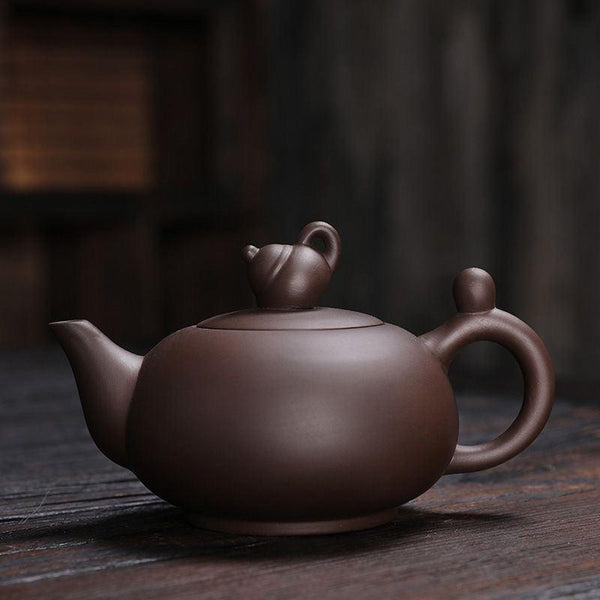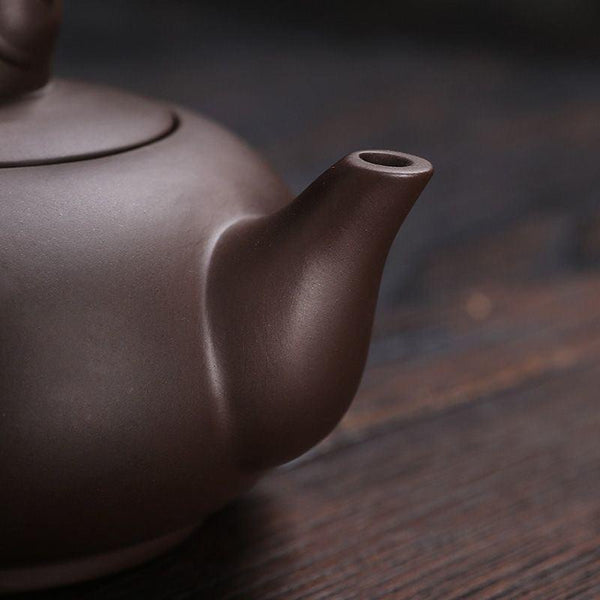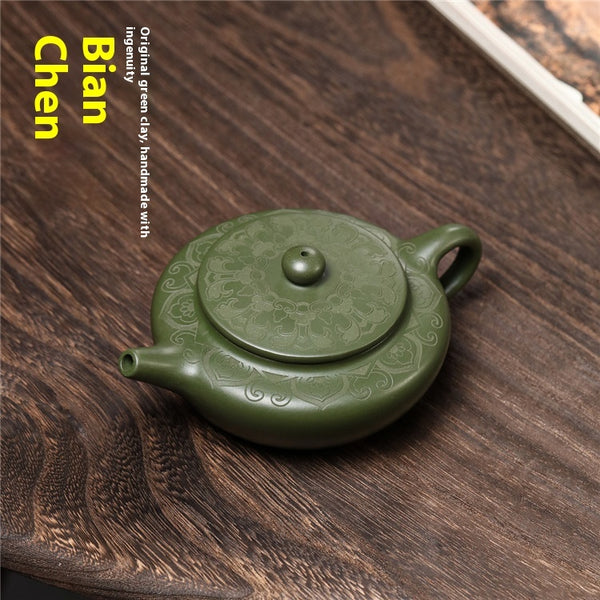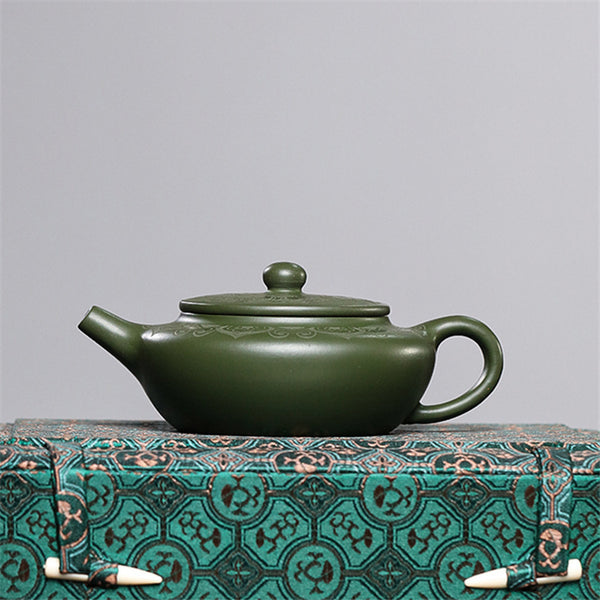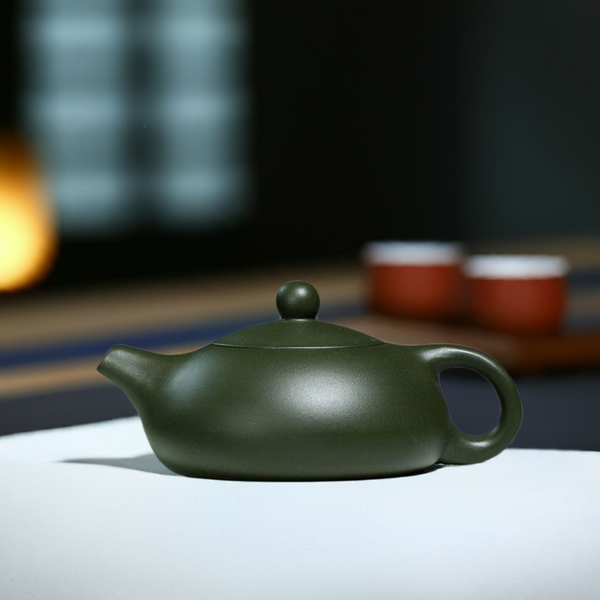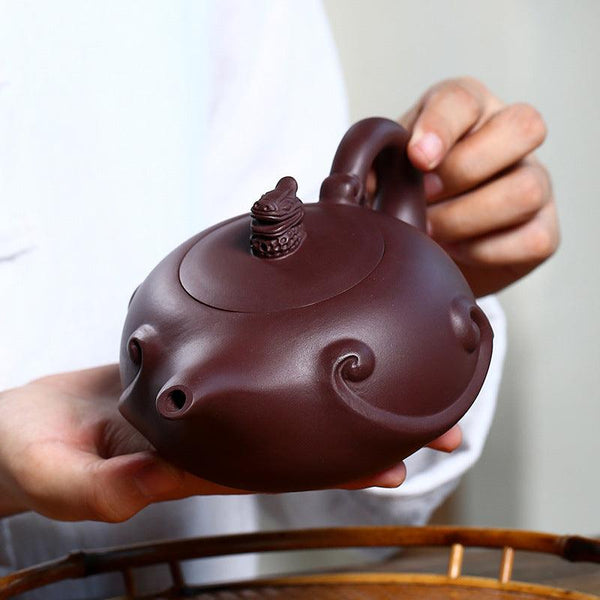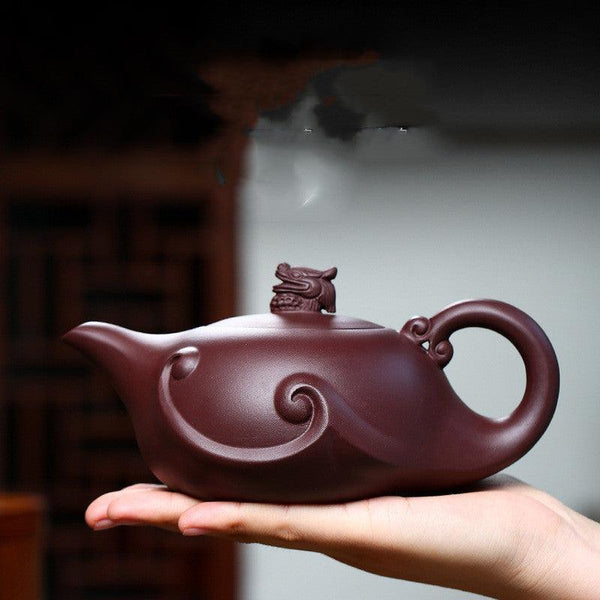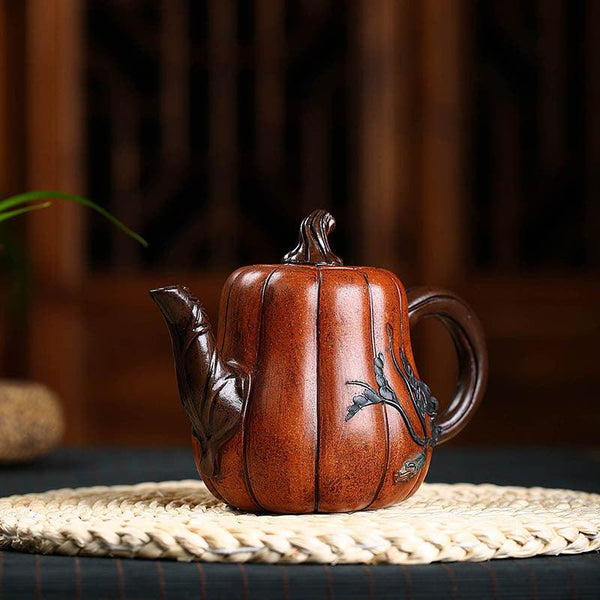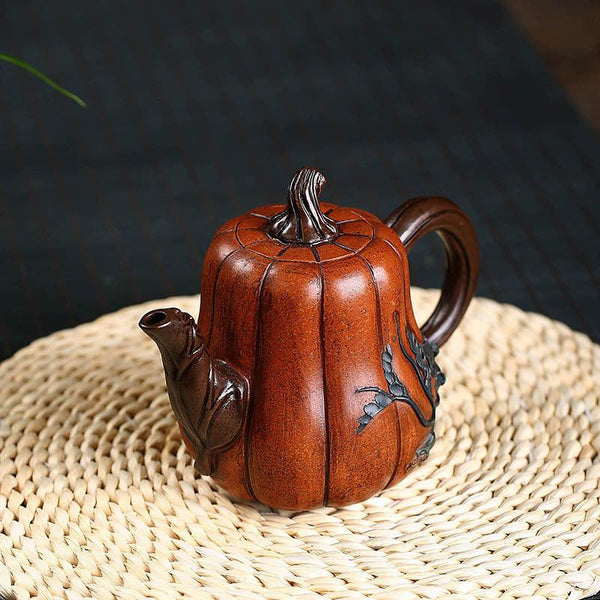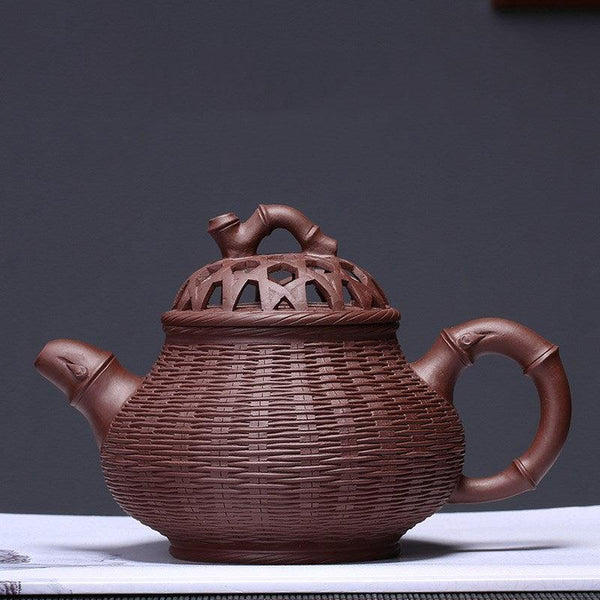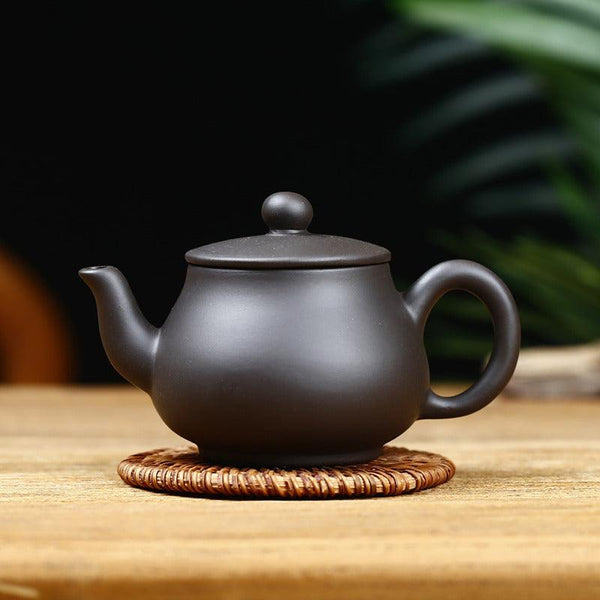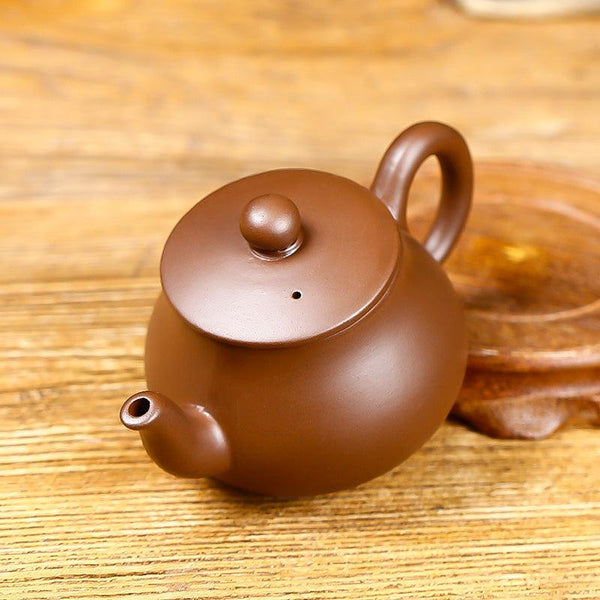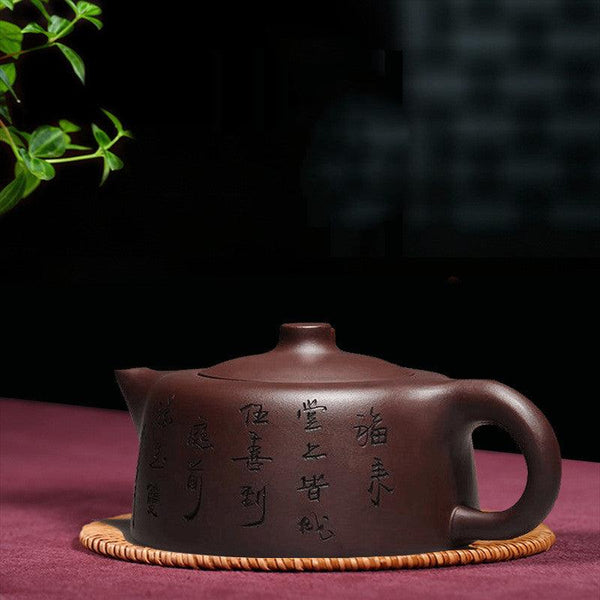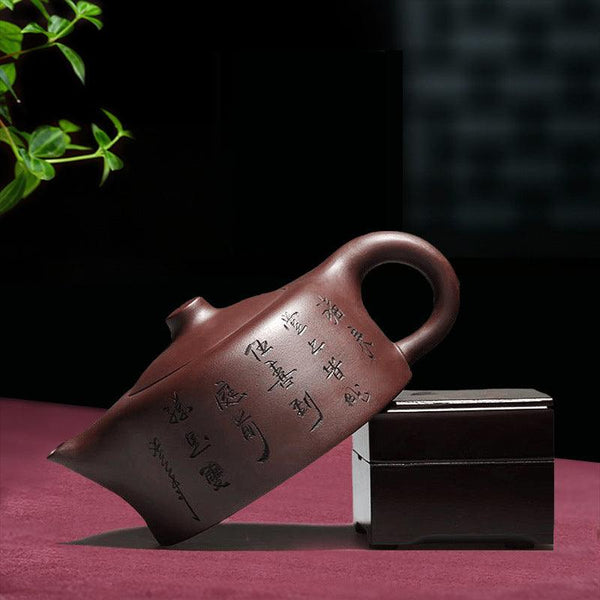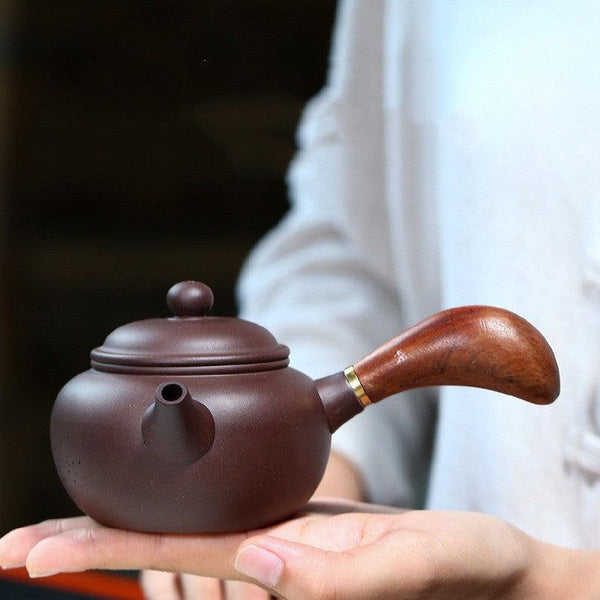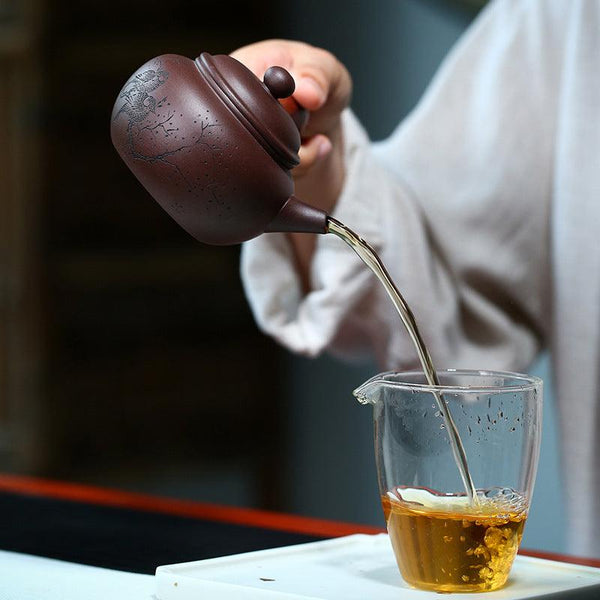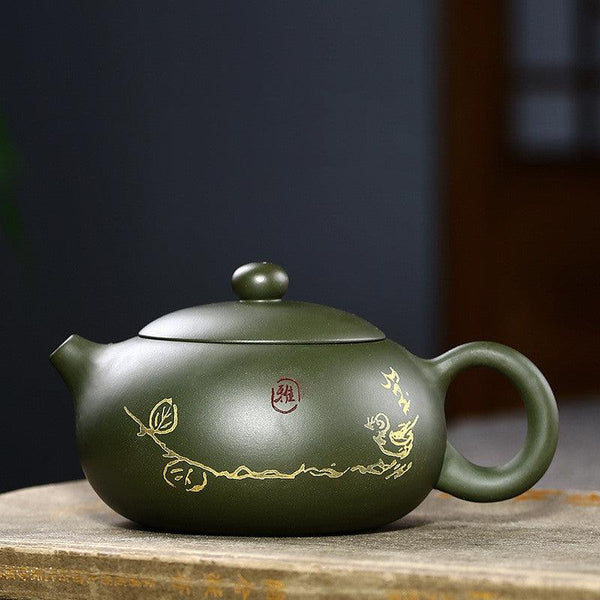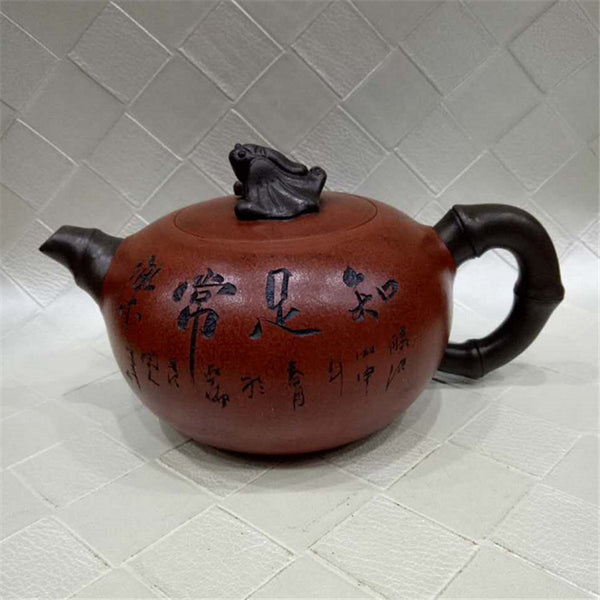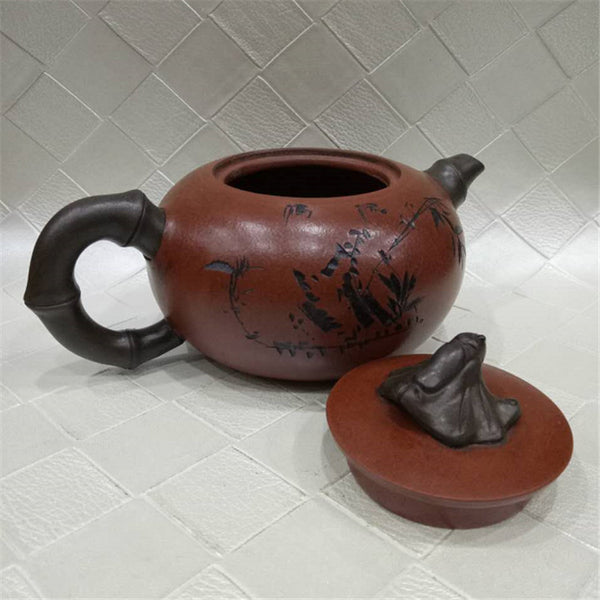In Chinese tea culture, Zisha pot is not only the carrier of tea, but also the spiritual support of the literati. Its unique double pore structure makes the purple sand pot have “breathable impermeable” magical properties; the ancients said that “wrapped in the aroma, scattered moisture”.
These material characteristics also gave birth to two very different concepts of keeping pots: a faction adheres to the ancient method of “tea mountain pots”, which, years of tea scale can make the pot emit jade glory, injected into water, can also give born to tea aroma. The other group adheres to the hygiene principle of "clean every time", believing that tea stains can easily breed mold and heavy metals.
Tea Scale Retention: The traditional aesthetics of keeping pots
“Tea Mountain” is the elegant name given by Zisha pot users to the tea scale accumulated over the years. Traditional tea people regard it as the soul of the pot, and believe that it carries the tea flavor precipitated by time. The Ming Dynasty “tea sparse” has recorded: “teapot cleaning and irrigation over the years, the charm of self-generated”.
The dark brown deposits on the pot wall are not only a witness to the years, but also seen as a “living” sign of the teapot. The accumulation of tea scale Zisha pot, even if only injected into the hot water, pouring out the water also with a light tea flavor.
Scientific Clean Pot Pie: Tea scale hidden health concerns
Modern scientific research has revealed the chemical nature of tea scale formation: tea polyphenols in tea and tea broth, in the calcium, magnesium, and other metal ions, in the air oxidation reaction, the formation of brownish-red polymer attached to the wall of the pot. Of greater concern is that if the water source or tea contains lead, arsenic, mercury, and other heavy metals, these harmful substances may also be enriched in the tea scale.
From the microbiological point of view, the accumulation of tea scale makes it easy to breed mold. Taiwan scholars have not cleaned the purple sand pot for microbiological testing, found that the depth of the mouth of the pot per square centimeter colony number as high as 10⁴-10⁵ CFU, which contains a variety of pathogenic Aspergillus. Long-term use of such teapots may cause digestive tract diseases, especially for immunocompromised people at greater risk.
More alarmingly, the accumulation of tea scale will gradually block the double-pore structure of Zisha. When the air holes are filled, it not only affects the quality of the tea soup, but also makes it easier for molds to grow in the deeper layers due to the humid environment.
Therefore, from a scientific and health point of view, we should support the “scientific clean pot school”. It is a fact that tea scale brings health hazards (microorganisms, heavy metals) and damages the core performance of Zisha pots (air permeability).
Achieve a scientific balance of hygiene and real pulp
Daily Cleaning (3 Steps)
- Immediately pour the tea residue, use the bamboo tea needle to remove the residue of the mesh (to avoid metal scratches)
- 45 ℃ warm water pulsating rinse: repeated impact with the water flow on the inner wall of the pot (simulation of oral rinsing principle)
- Microfiber cloth to wipe the inner wall in a single direction (fiber diameter of ≤ 0.1mm, in-depth pores do not hurt the mud)
Deep Cleaning (1 time per month)
- Temperature buffer: temperature difference between cleaning solution and pot ≤ 30°C (to prevent shock cracking)
- Brush: use only a baby soft-bristled toothbrush to gently brush the inside of the pot spout
- Neutralize residue: baking soda needs to be rinsed with white vinegar water (water:vinegar = 20:1) after cleaning
Raise the Real Pulp
Tea oil nourishing is the best method to raise pulp. When making tea, use the 3rd-5th tea broth to drench the pot (at this time, the tea oil content is the highest). After drenching the pot, within 2 minutes, use the thermostatic pot-raising instrument (45℃) to bake at a low temperature to promote the absorption of the micropores.


